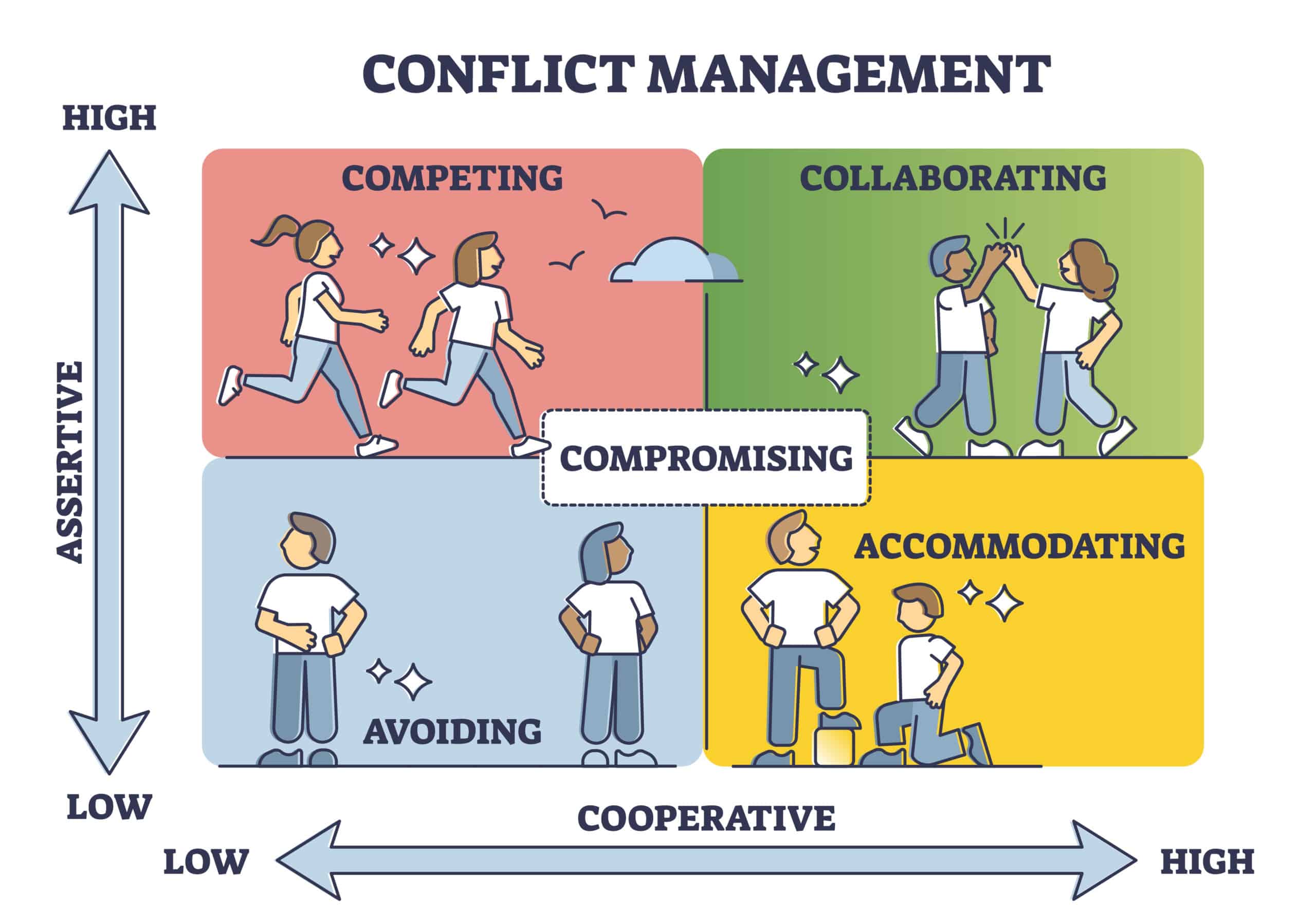There may be no disagreement because people are afraid to speak up. Recognizing when more motivation is necessary will help you manage arguments more effectively. If people remain silent, the outcome may be subpar.
Disagreements are an inevitable part of every interaction between individuals. People generally want to avoid arguments as much as possible since they know how dreadful they may make them feel. However, a productive disagreement can encourage innovation and lessen the likelihood of disagreements. Human resource managers employ a wide range of strategies to resolve conflicts, many of which are aimed at bringing the parties involved to an amicable compromise. Tactics include working together, adjusting expectations, avoiding conflict, and making amends. Managers face a challenge when attempting to find a consensus between competing interests.
The negative effects of workplace conflict extend to managerial levels. Studies show that managers devote around a quarter of their time to resolving issues in the workplace. Because an argument can cause so much damage to a business, it’s crucial to establish norms for how workers interact with one another. Working out conflicts between workers and management is an expensive endeavor, and human resource management requires adequate funding to be successful. Improved morale and cooperation at work as a result of dispute mediation can have a positive impact on output.

What is conflict at work?
Workplace conflict, in its most basic definition, occurs when two or more workers cannot resolve their differences over some aspect of their work without resorting to arguments, which waste time and reduce productivity. It’s worth noting that ego and personality clashes account for about half of all workplace confrontations. Some workplace arguments are minor and easily addressed, while others can snowball into major problems. Conflicts at work can happen in any company; however, not every disagreement is bad for business. Some workplace disagreements have the potential to bring about beneficial changes that boost performance, productivity, and income.
Conflict’s Repercussions
People sometimes wrongly assume that physical conflict usually results in negative outcomes. Conflict can weaken a group, but it can also spur creative problem-solving and strengthen relationships between individuals. As a result of their interactions, the warring parties may gain insight into themselves and find new sources of inspiration. Therefore, it may be feasible to avoid the problem from getting worse by lessening tensions between parties and coming to a peaceful conclusion. Workplace conflict is a symptom of organizational dysfunction or malpractice and should be addressed as soon as possible. Management may learn of systemic concerns through minor arguments before they escalate into major conflicts. Human resource management may come up with creative answers to a team’s difficulties considering the wants and demands of other divisions in the business. However, disagreements can spark new ideas and highlight areas that need more structure. Conflict’s unpredictability can cloud the group’s vision and stunt its development. Management and staff members may experience mental and physical exhaustion, resulting in decreased productivity.
Strategic Approaches to Conflict
This section explores successful approaches to settling disagreements inside an organization. When dealing with problems, it’s important to look for realistic ways to ease tensions with others.
Identify the cause of conflicts
The first step toward resolving tension is to identify its source. Understanding the dynamics of the problem necessitates identifying its causes. You will also be successful in persuading the parties to agree on the main problem. The only way to do so is to discuss each party’s needs, which are now being ignored. It is also critical to ensure that everyone involved understands the situation. It is necessary to completely comprehend the opposing ideas. By asking clarifying questions, you may ensure that everyone involved in the issue has a thorough knowledge of the situation.
Act pre-emptively and offer useful feedback
Managers will be better positioned to settle conflicts if they invest in developing a trusting and respectful culture. Managers must foster an environment in which employees feel free to share their ideas, thoughts, and complaints. They might achieve this by establishing open channels of communication. Conflict resolution is much easier when employees believe their managers care about them and that they can express their problems openly. The ability of a manager to understand the issues and emotions driving an employee’s dispute is based on the manager’s willingness to listen to the employee’s side of the argument.
Finally, in today’s competitive and fast-paced environment, workplace disputes are unavoidable. However, not all disagreements are created equal. Some are simple misunderstandings or miscommunications, while others can swiftly escalate into full-fledged confrontations that impair team productivity and morale. Managing and resolving workplace conflict is crucial to accomplishing company goals. So, if you have any problems or disagreements, look for the best ways to resolve them.
Photo: GaudiLab/Shutterstock
You might also like:
Support us!
All your donations will be used to pay the magazine’s journalists and to support the ongoing costs of maintaining the site.
Share this post
Interested in co-operating with us?
We are open to co-operation from writers and businesses alike. You can reach us on our email at [email protected]/[email protected] and we will get back to you as quick as we can.









